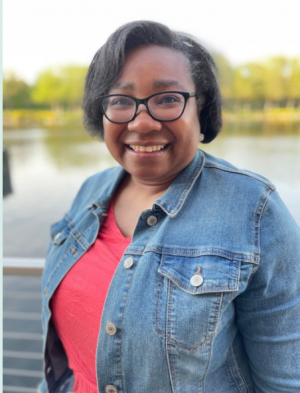The Tokyo Olympics are underway, and this year it is different in our home with our son. Not only are we very aware of our own country in the games, but we are watching his birth country as well—South Africa. While thinking about the games, I’m reminded of the sport that captured my interest in the Olympics—basketball. It leads me to think about the first time I started watching basketball.
As a child, I was a Utah Jazz fan. I loved to see John Stockton and Karl Malone play together. With the excitement and addition of the USA Men’s Basketball Dream Team in the 1992 Olympics, my love for basketball grew out of the NBA to the Olympics. I was very aware that Team USA is a part of basketball and many different sports. Watching the Olympics became a part of my life after the 1992 Olympic games.
When I met my husband, we agreed on two things: sports and adoption. We loved to talk about the Olympics and began to fantasize about cheering for multiple countries if we were to live abroad or adopt internationally. While it was an afterthought at the time, we did not know that it would be our reality with living in two different countries and the adoption of our son from South Africa.
Coming from two different worlds, we prefer to watch other sports. He may not be particularly interested in any sport that we are interested in because of his exposure to certain sports in his birth country. Thus, it is our job to learn as much as we can about his favorite sport so that we can incorporate it into our daily life out of support for our son.
Our American Tradition
My husband and I come from basketball-loving families. It was late one night, and I decided to watch the Knicks play against the Jazz with family friends. I was curious about the sport after hearing the amount of noise coming out of my living room. I could listen to the cheering and the bouncing sounds of the crowd cheering and yelling “Defense” and the bouncing of the ball. Once I sat down and watched and saw the dynamic duo of Stockton and Malone and how they worked together, it was love at first sight. I sat and stared in amazement at their chemistry and how they worked together as a team. At the same time, former Knicks basketball player, John Starks, made a three-pointer to a sellout crowd at Madison Garden. It was 1991, and then a 10-year-old Deirdre was introduced to the game of basketball. As I got older, I knew that I would be a fan forever, and whomever I married—they would probably be a fan as well.
While we love the game, we are not as athletic as we would love to be. We love the thrill and the excitement of the ball bouncing down the court to land strategically in the net—the sound of going to games and the joy of just being in the crowd. And there is nothing like having 2 seconds on the board and the ball going into the hoop to see our favorite team gain the lead and win. Of course, this exciting play happens with the crowd going wild. We know the stats of our favorite basketball players and have stories of where we were and what we were doing during an NBA or NCAA final. Michael Jordan, Kobe Bryant, Lebron James, and others are in our ordinary everyday conversation. Plus, rivalry night with our two favorite Carolina basketball teams is always celebrated with pizza and wings.
And being that my husband served his country, we are very patriotic and loudly cheer for team USA in the Olympics. Due to my husband’s military career, we lived in England and Japan, and we would cheer on Great Britain and Japan as well.
Our Son’s South African Tradition
Our son joined our family coming from a different background. Unlike us, he is very athletic and takes joy in moving around with a ball. He loves kicking and hitting the ball; thus, basketball is not on the list of sports he enjoys. He enjoys soccer, which is a sport that he played while he was living in South Africa. Slowly, he is beginning to enjoy throwing the ball, but that is because, in soccer, the goalie saves, and that is his position of interest at the moment. Our son loves the atmosphere of the loud drumming and the stomping and the chanting. He loves to see the ball bounce off of people’s heads and their bodies. Our son notices the South African flag and is very proud to wear his South Africa rugby jersey from the Rugby World Cup. When he hears the American national anthem, he places his hand over his heart and begins to sing the South African National Anthem that he learned in South Africa.
The Blending of Traditions
Sue Kuligowski, in her article, “How Do I Incorporate My Child’s Culture into Our Lives More?” mentions that “coming home did not mean the end of our journey of learning.” This was a motto that our family adopted when we submitted the paperwork to adopt our son. We want him to feel that his talents and that his birth culture is significant to us. We are naturally curious about his interest and want to be a part of anything he enjoys so that we can enjoy it together.
Although we adopted our son at almost 3 years old, his sports interests are something that we believe is genetically in him. He has this interest in kicking and hitting, and while he watches basketball with us, it is not something that he is interested in right now.
While we are basketball lovers, soccer is something that we research in our personal time. We’ve checked out books about soccer and my husband goes to each of his practices and takes notes from the coaches. Also, we have a family friend who coached soccer and loves any opportunity to answer our questions. For example, our son is interested in being a goalie, and my friend gave us tips on what we can do to have him play goalie.
Blending families are not just about sports. It is also about learning the other elements of culture. The blending of these elements helps to create a comfortable environment for the adoptee and the adoptive parent. In Transracial & Transcultural Adoption Preservation, Policy, and a Personal Perspective, Alexis Oberdorfer speaks about the blending of cultures among adoptee and adoptive parents.
Alexis Oberdorfer, MSW, is a social worker who oversees the adoption programs for Children’s Home Society and Lutheran Social Service of Minnesota. She is an adoptee in transracial adoption and an adoptive parent in transcultural adoption. In the article “Adoption Advocate ” from the National Council for Adoption, Oberdorfer uses history and her personal experiences to share the evolution of transracial and transcultural adoption. She adopted black children from another country. She knew that from her experience that she would need to “step up her parenting knowledge to meet her children’s needs.” She made sure that she was educated about the products that her daughter would need from day one. She carved out time to learn and practice with her daughter’s hair and learned how to treat her son’s hair. She goes on to explain that while her children are of the same race, they still “feel it is essential that our children have books, toys, dolls, crayons, playmates, movies, etc., that reflects them.” She goes on to describe that she brings art, a map of their country, and things that would give them a “sense of identity and pride.” This is the same with our son, and we try our best to expose him to different music, art, literature, and shows from South Africa.
While soccer is not a preferred sport for us, it is for our son. When we picked up our son, the first thing that we did as a family was watch him guide himself by kicking around a soft soccer ball. After we came home, this natural curiosity to kick around a ball and dribble the ball never left him. When we would go to the playground, he would look at a group of men playing soccer and told us that he wanted to play as well. He is fascinated with watching soccer on TV. Thus, we decided to enroll him in soccer and go to practices to learn the sport ourselves. We try to make an extra effort to take our son to soccer games and have him be a part of soccer culture. I love that all of us are learning the sport at the same time together.
Oberdorfer ends the article by stating that “families need to be willing to actively seek resources to understand how to prepare and support children to become adolescents and adults who are prepared to participate in the community as a person of color.” She makes this statement because of her experience as a transracial adoptee and an adoptive mother herself. For us, it is the joy of my life to learn about my son.
The Sports Education from the Olympics
Like every family with accessibility to watch the Olympics worldwide, we peak in and out of different events. Still, the main events that we catch as a family are soccer, gymnastics, basketball, rugby, and swimming. Last night my husband, without my son, turned on the rugby competitions. We learned that rugby sevens are similar in size to three on three basketball.
It is exciting to watch our son look for the South African flag and identify it with pride and cheer on the South Africans. At the same time, there is an awareness of the American flag, and he also cheers on the Americans.
Our Blended Culture
When we adopted our son, we promised that we would honor his birth country and expose him to his home country as much as we could. He made that easy for us with his love of more popular sports in South Africa like soccer and rugby. It has been two years since he’s arrived in our home, and we try our best to make this our goal. Stockton and Malone have since retired from basketball, and my love for basketball still stands. Now, I am fascinated by Siya Kolisi, who plays South African rugby, and the Orlando Pirates team, who plays South African soccer. The honoring of two cultures (especially during the Olympics) helps to keep our family closer together.

